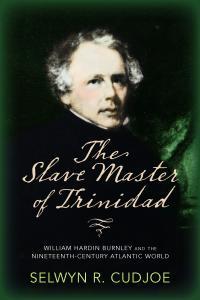Hear ye; hair ye: listen and be enlightened
By Dr Selwyn R. Cudjoe
August 16, 2024
Part III
The revolt of October 1, 1849, one of the most momentous occasions in our history, was led by women of the lower order. They took the initiative in fighting one of the most oppressive pieces of colonial legislation that was designed to prevent their economic enterprise and dignity as a proud people of colour. In fact, they berated the men for not having the testicular fortitude to fight this injustice.
Three women led this protest: Felicite, Maria Teresa and Sarah Fortune Guin. Felicite was a fisherwoman. Throughout the protest, she screamed: “Ti-bou-ron.” In the Carib language, Ti meant fish. Ti-bon-ron meant “fish death-announcing”. She was willing to take a life to achieve her objective.
John MacWilliams, a mariner, saw Felicite going up the street near the grass market. During those days, grasses were sold as food for domesticated animals. He asked her: “How are things going?” She answered: “Things are not finished yet. We have not yet got the victory. If it doesn’t happen, we are going to put fire directly.”
Another policeman, William Gittens, heard her say with great passion: “Mettez du feu,” meaning they would resort to the use of fire if they did not achieve their objective.
MacWilliams also told her “that a married woman like her ought to be ashamed of her behaviour; a woman only married a few days ago to become a blackguard. She told me to mind my business. All men are cowards”.
Maria Teresa was anger personified. She was one of the first persons to storm Government House.
Oscar Fitz Allan, a policeman, described her appearance: “She had on a petticoat without a body. It was pretty decent in the morning. In the afternoon, it was tied up above her knees.
“Between one and two p.m. she was in a rage. She was walking up and down before Government House, speaking loudly in a French patios and her clothes were tie up around her. I computed she was mad.”
Sarah was also outraged by the Gaol Regulations. She was among those throwing stones at the policemen.
Pierre Louis Alexis, a painter, testified that he saw Sarah “stoop and pick up a stone and throw it at the window”. Together with Felicite and Thomas Neilson, she beckoned the people to throw away their fear and stand up for what was right. She was unafraid of the consequences.
These women were really angry. Lord Harris, in his letter to Earl Grey, the secretary of state, emphasised their fierce opposition to the law.
He wrote: “Nothing could exceed the violence, scurrility and obscenity of the language of the mob who appeared ready for an atrocity. The women, as usual, being the most prominent.”
The next day, October 2, the governor got a better assessment of the damage. He learned that the mogass houses in the Tacarigua area (Macoya, El Dorado and Dinsley) were all burned to the ground with their entire stock of fuel that was being kept for the following year’s crop. The loss was estimated at about £6,000.
The governor also learned that large bodies of men were marching into town, armed with cutlasses, and many more were congregating in the streets of Port of Spain.
Hearing rumours that Government House would be attacked again, the governor dispatched a vessel to Barbados to bring in more troops to the island to reinforce those who were there.
Shortly thereafter, about 60 seamen arrived from Barbados on the HMS Scorpion to support the troops already on the island.
The news of the Trinidad revolt did not take long to reach London. Jean Jacques Cazabon, a Trinidad landscape painter, captured the occasion for the Illustrated London News.
It was a beautifully crafted sketch of the government building besieged by thousands of inhabitants and a mighty Union Jack flying high in front of the building. His report appeared on November 10, 1849.
The British and some scholars have portrayed this event as “a riot”. It was not. After all, 5,000 people (1/8 of the non-white population) showed up in front of the Governor’s office to protest the action of the council. In 2024 terms, those numbers would equate to about 105,000 inhabitants surrounding our Parliament to protest the actions of their leaders.
It was a political revolt against a cruel bit of class legislation that was intended to humiliate the population, particularly the women, and reduce them to their former state of servitude.
Slavery had ended 11 years previously. As Kamala Harris, presidential nominee of the Democratic Party, would have said, “We are not going back.” The “lower orders” had gathered to protest a specific piece of legislation that manifested a deep problem that struck at the heart of their society.
Black women led this movement. It is something we should never forget.
—Prof Cudjoe's e-mail address is scudjoe@wellesley.edu. He can be reached @ProfessorCudjoe.
Share your views here...

The Slave Master of Trinidad by Dr. Selwyn R. Cudjoe
|

